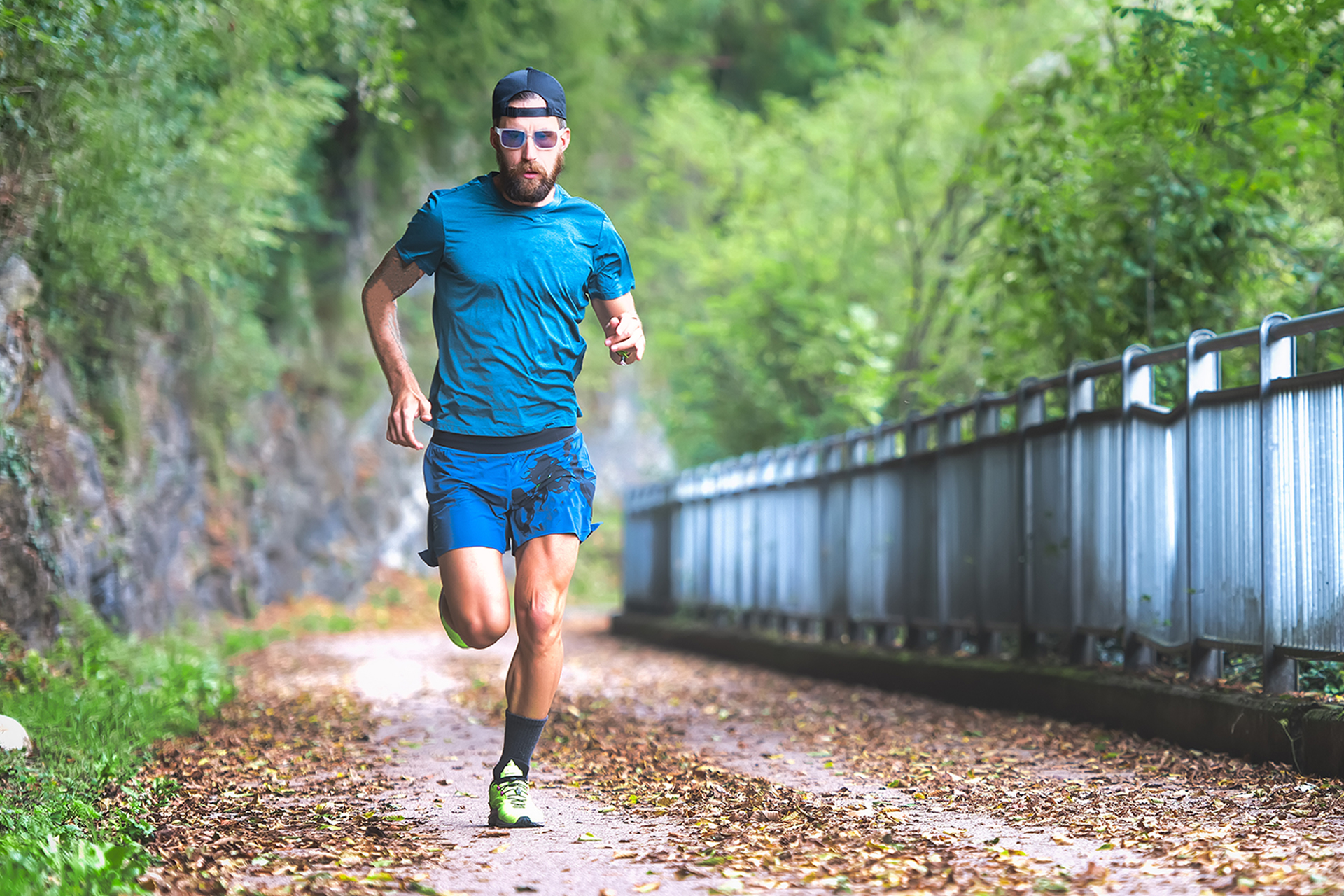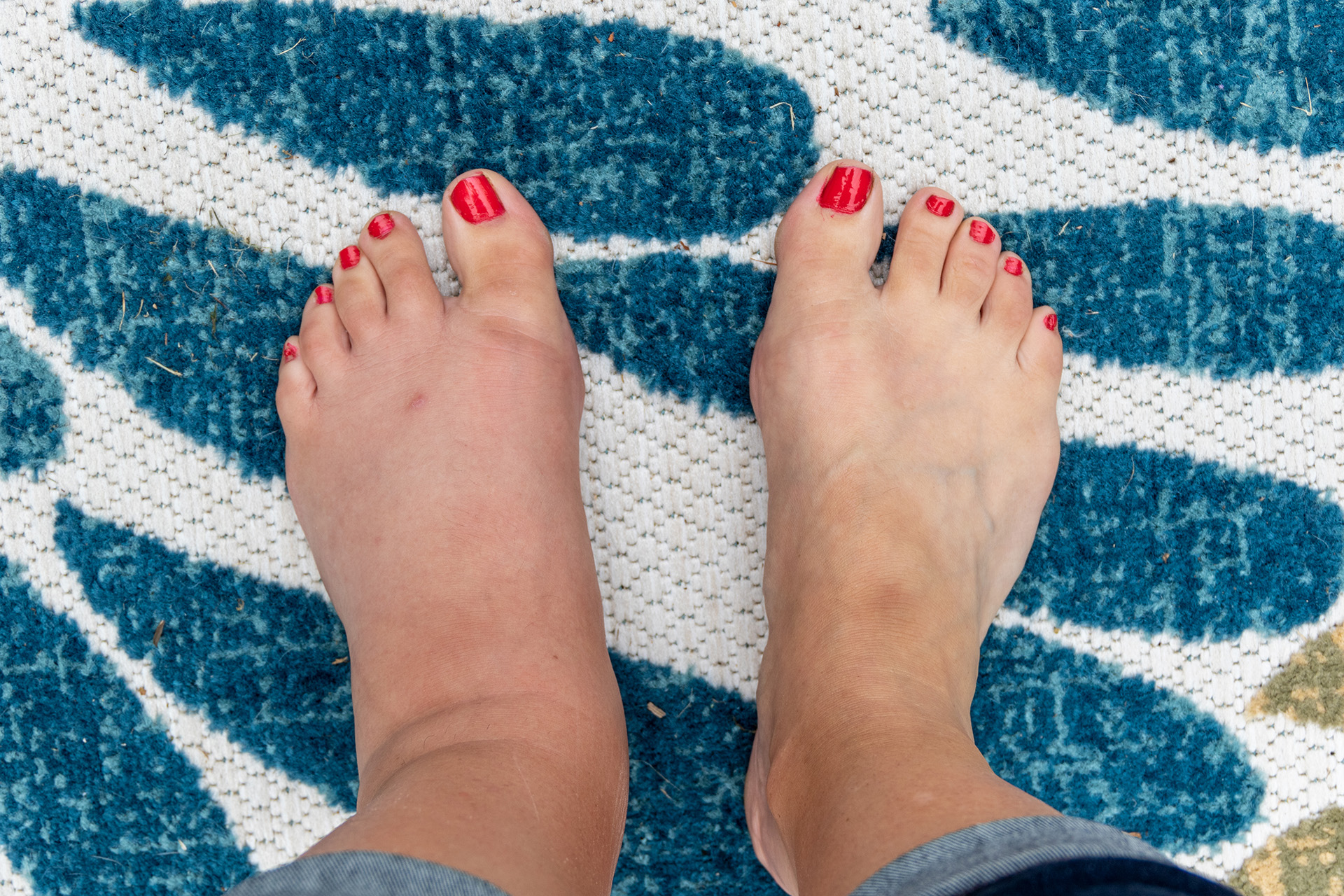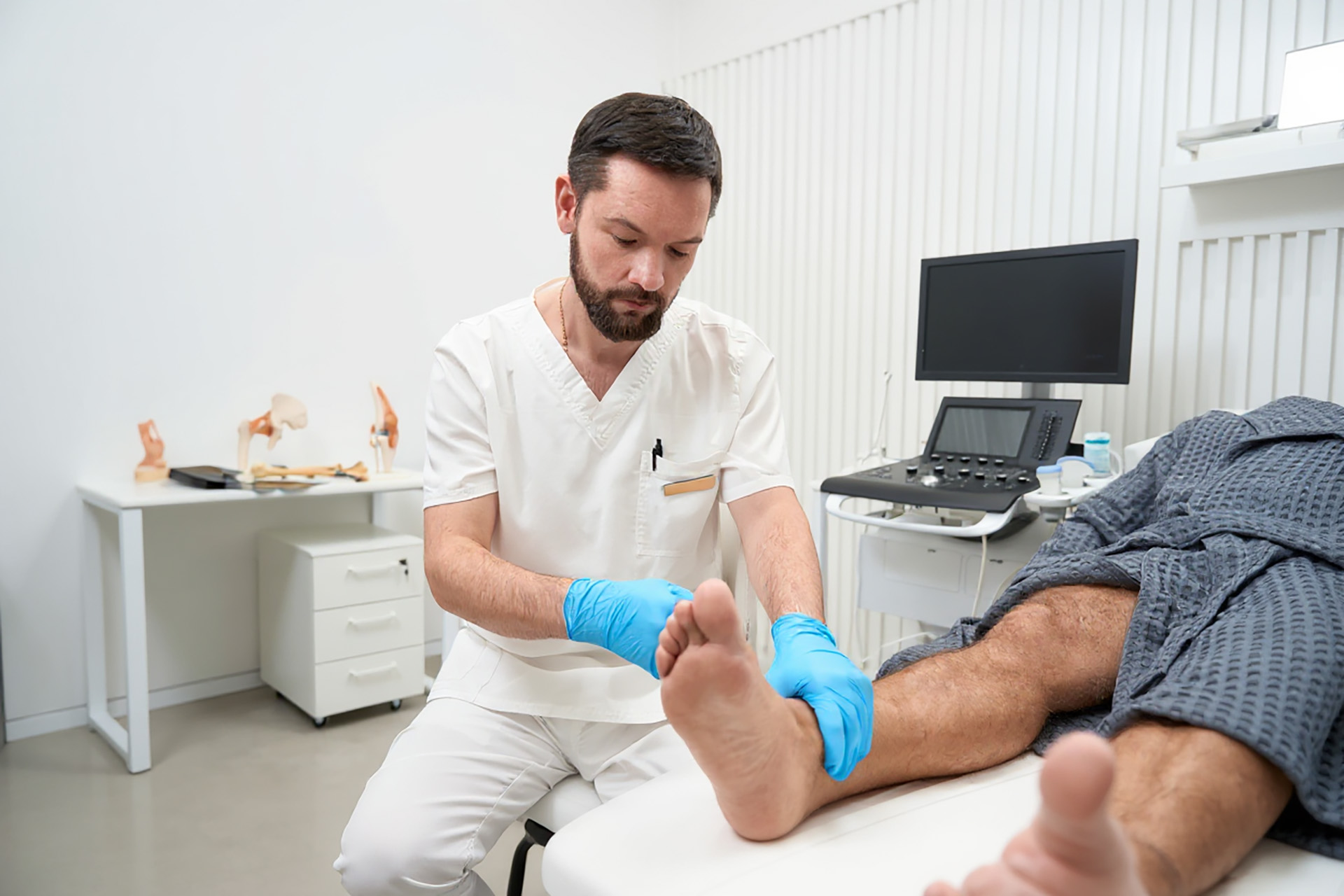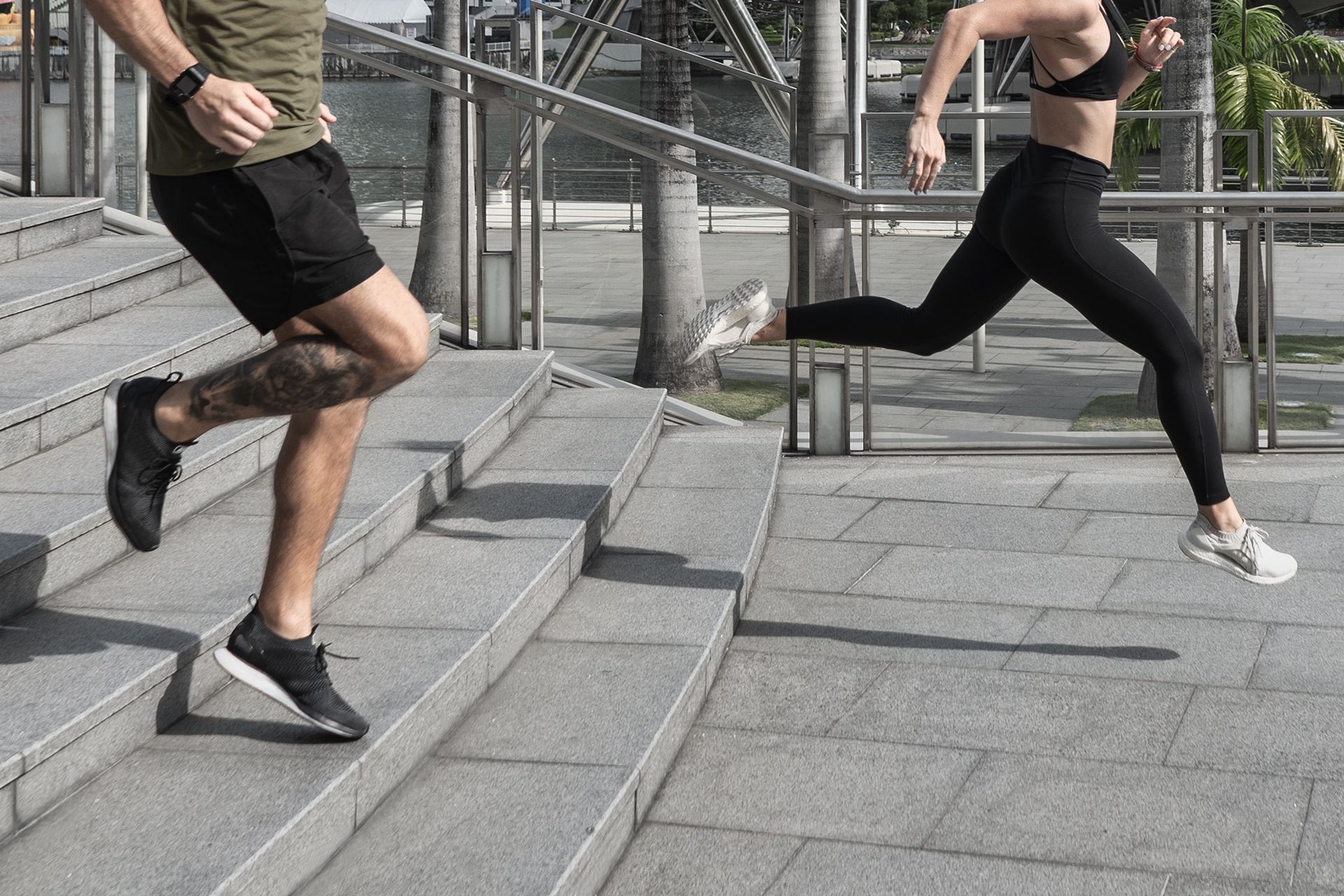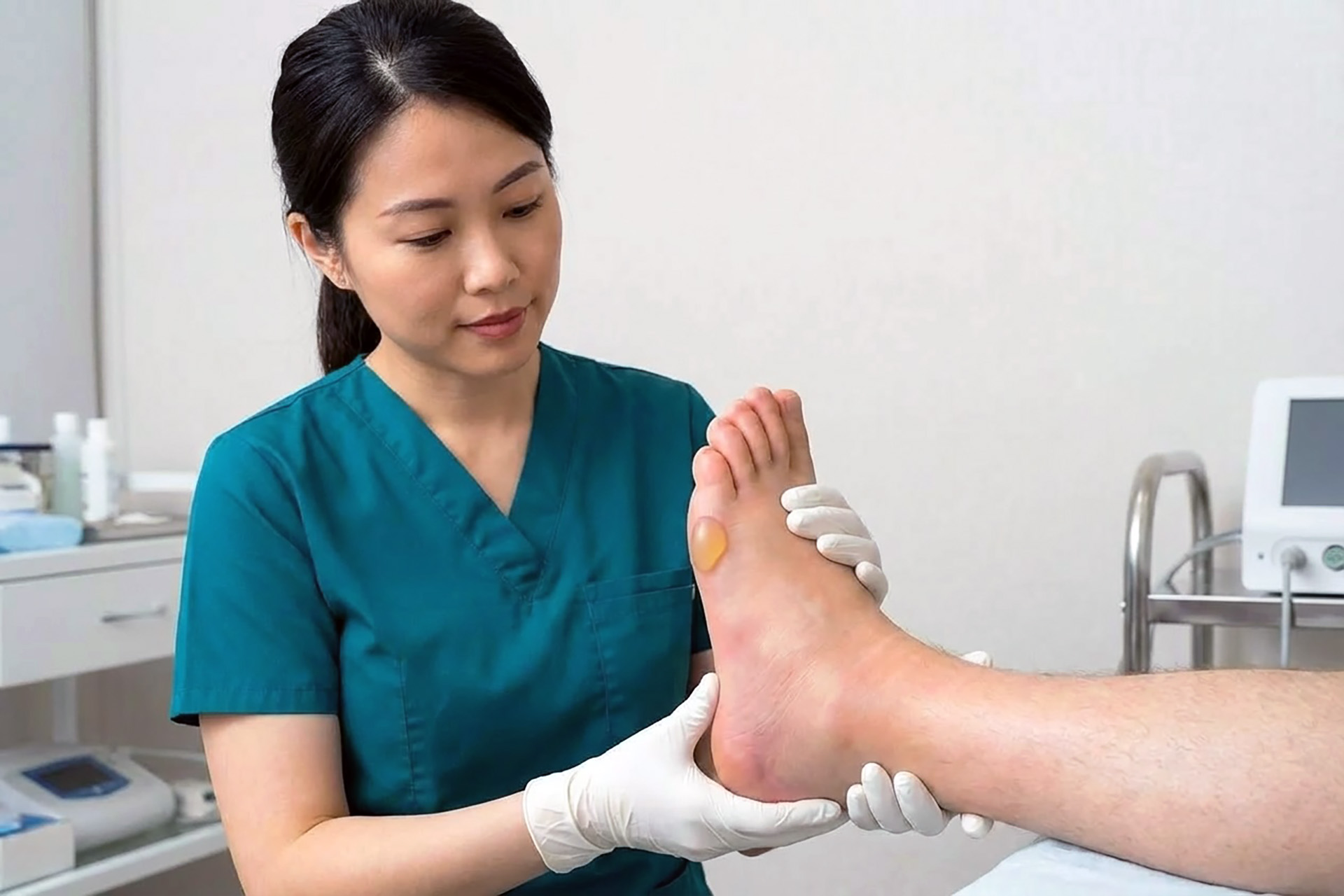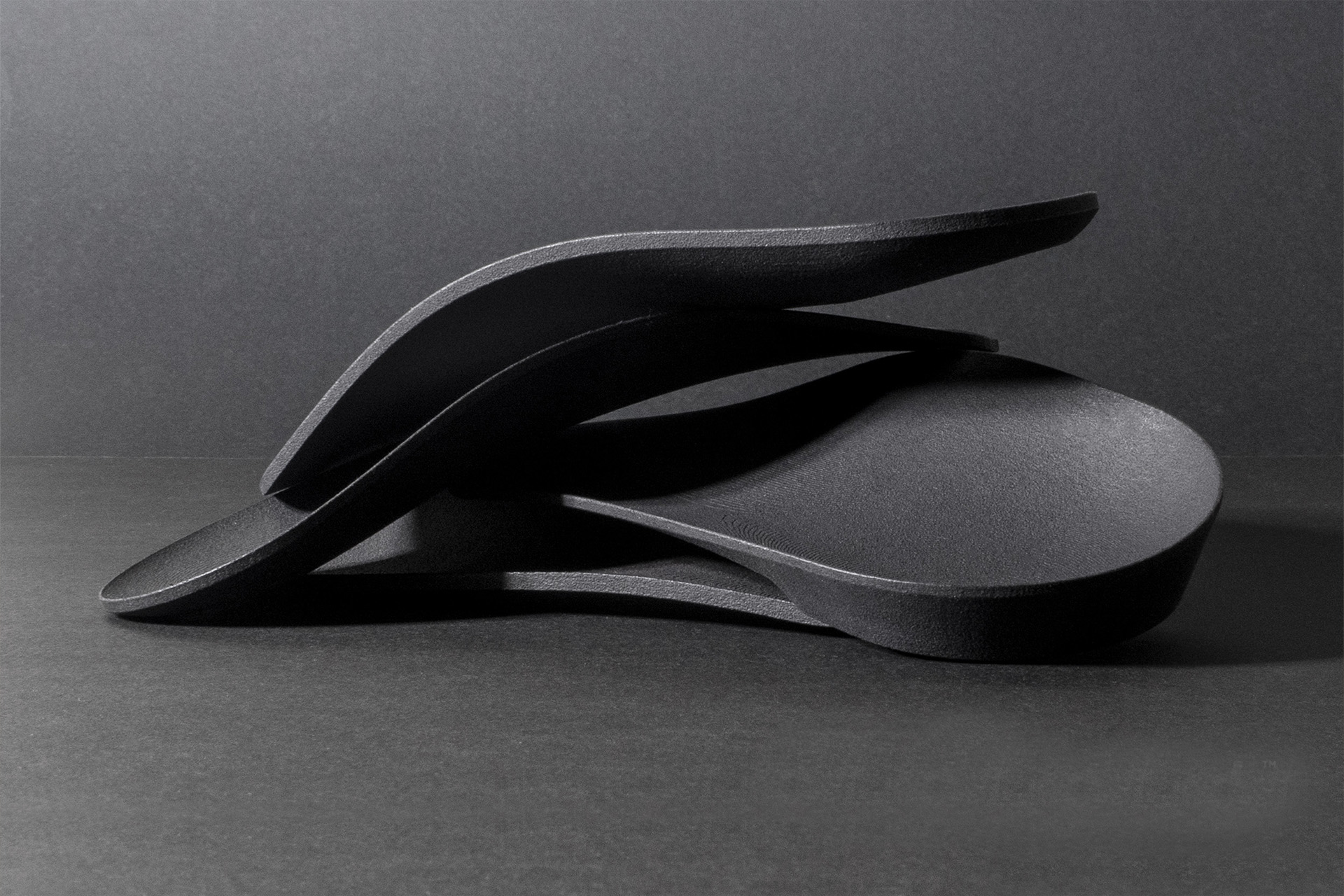Demands of Running on the Feet
Imagine pounding the pavement for over 42 kilometres, each step carrying the entire weight of your body. Have you ever wondered what your feet go through during long-distance running or marathon training?
The constant repetitive motion for this extended distance places immense strain on the feet. With every step, the feet bear the brunt of the entire body’s weight, multiplied several times due to the impact of each stride. This can amount to thousands of tons throughout your running career.
Depending on the location and time of year, if you’re just starting out running or training for a marathon, you may encounter hot, cold, or wet conditions, which can present challenges to foot health. Cold can numb the feet, heat can exacerbate sweating and swelling, and wet conditions can increase the risk of blisters and fungal infections. The feet are prone to sweating, and over several hours of running, the combination of sweat and repetitive motion can result in chafing blisters and other skin irritations.
Although most running typically occurs on roads, the quality and grade of the surface can vary. This requires the foot to adjust its landing, stride, and push-off to accommodate these subtle changes.
Whether it’s the scorching sun, a freezing morning, or a drizzly day, your feet are against it all. It’s truly a remarkable journey!
Distinction Between Experienced and New Runners’ Concerns
Seasoned runners have feet that have been through the wringer. They are like well-oiled machines, conditioned from kilometre upon kilometre of training and past races. They’re attuned to the challenges, having faced and conquered many foot issues in their running journey.
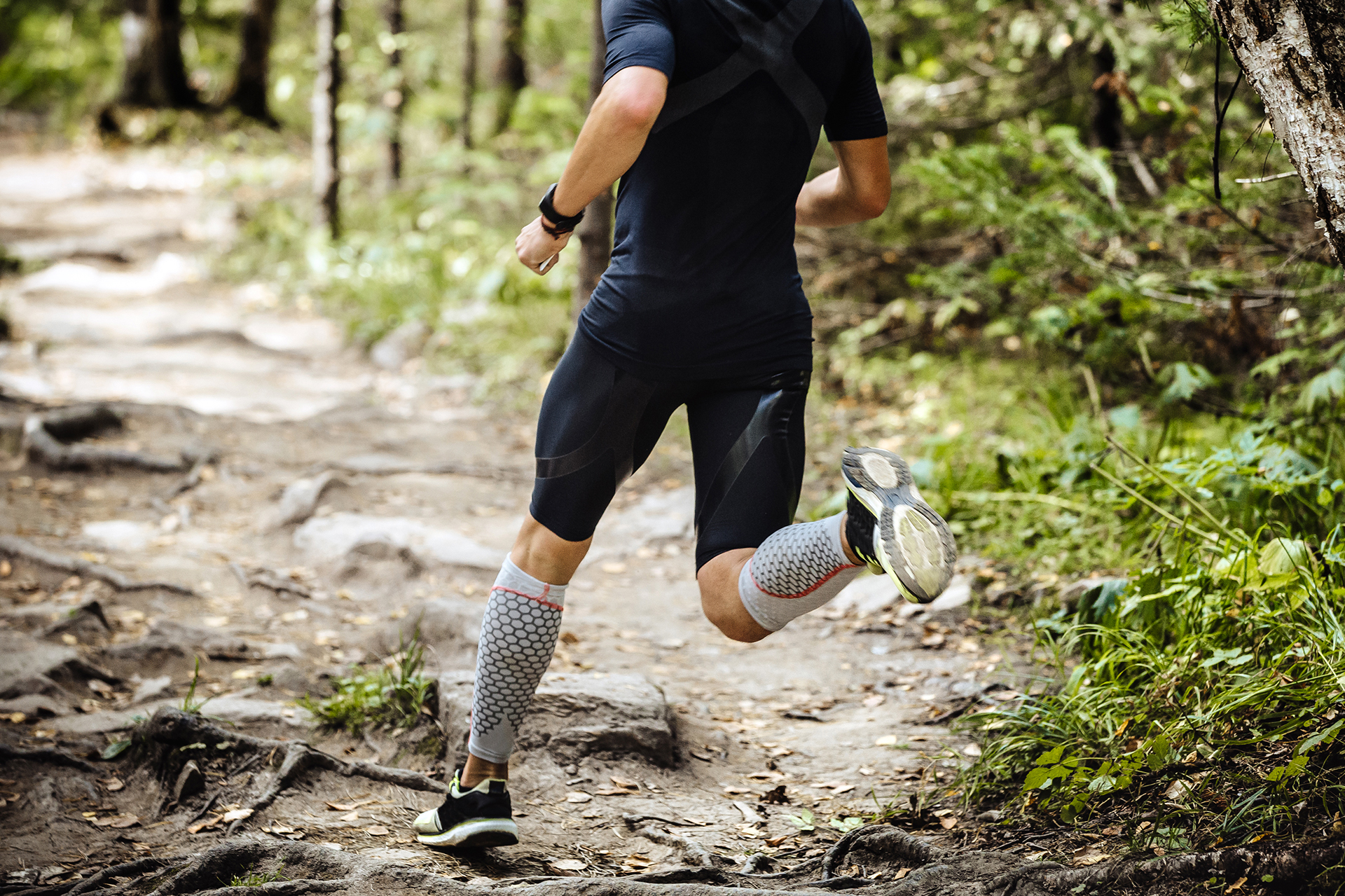
These runners know their gear. Think of them as the gear gurus. They’ve trialled different socks and shoes, understanding the fit and finding their holy grail, knowing precisely what gives them that comfortable stride.
Experience also has granted them a sixth sense. They can tell a harmless ache from a potential injury. Seasoned runners have honed the skill of discerning when to rest and when to power through. Recovery for them isn’t just a concept; it’s a ritual. They’ve learned the remedies that offer the quickest bounce back from foot pain after long runs or post-marathon.
The Novice
Foot pain in new runners often occurs as their feet adapt and learn the ropes. As they refine their running form, novice runners may experience increased discomfort in specific areas of the foot as they fine-tune their running form. They might feel the brunt more in certain foot areas and are more susceptible to a wide range of foot issues simply because they aren’t as conditioned. New runners are often still refining their running form, which can result in uneven or increased stress on particular parts of the foot.

They might have difficulty distinguishing between routine soreness and the onset of an injury. They might also be more likely to push through pain or a niggle that needs attention., increasing the risk of exacerbating an injury.
New runners may still be finding the proper footwear, perhaps unaware of what makes one pair superior. They might not be aware of the importance of factors like shoe fit, arch support and material.
Recovery might be a new concept, and they might not know the importance of post-run stretches, foot ice baths or elevation as ways of how to prevent foot pain after running and promote faster recovery. Foot care is a novel concept they’re beginning to explore.
Regardless of which one best describes where you are currently, understanding these distinctions and demands, new and experienced runners can better prepare for marathons and reduce the risk of foot-related injuries or discomforts.
Understanding the Mechanics of Your Feet
Every runner, whether rookie or elite, knows the value of those trusty feet that carry them, especially when aiming for marathon greatness. But have you ever taken the time to understand the underlying mechanisms behind your foot mechanics? Here, we look at some physiology and biomechanics that kick your feet into gear.

- Medial Longitudinal Arch isn’t just a curve in your foot — it’s an energy-saving spring. As a runner, the dynamics of your foot arch disperse the impact, saving your legs from early fatigue. Yet, its decline (as in flat feet) can predispose one to conditions like plantar fasciitis. Hence, recognising its importance can dictate shoe choice and stride.
- Forefoot Mechanics are to be noticed; the midfoot and forefoot regions are paramount. The metatarsals, those long bones in the midfoot, are responsible for weight distribution and shock absorption — a runner’s best friend when avoiding pesky metatarsalgia.
- Toes, while they might seem small, are mighty and more than meets the eye. They provide the final push in our gait cycle, thrusting you closer to that finish line with each step. That said, wrongly fitted shoes or improper form can leave your feet with painful blisters or even lost toenails.
- Calcaneus bone forming the heel is like the foot’s shock absorber. As it makes the first contact during heel-strike running, it faces a force several times our body weight. But there’s more to the story.
- Ankle Joint, acting as the linchpin, offers stability and dictates the foot mechanics with its range of motion. This collaborative effort between the heel and ankle ensures efficient shock absorption.
- Muscles, Tendons and Ligaments coordinate intricately, ensuring your foot moves, flexes, and responds to varied terrains. They adjust to our pace, and if you push them too hard, an overworked tendon might grapple with issues like Achilles tendinitis. Ligaments like the plantar fascia further enhance stability.
- Pronation and Supination are more than fancy jargon. They highlight the foot’s natural inward and outward rolls. Addressing overpronation or underpronation is critical in preventing uneven stress distributions, and the proper footwear can be a game-changer here.
- Soles of our feet aren’t just for stepping; they’re sensory powerhouses that help us navigate and adapt to different terrains seamlessly, letting us know that proprioception is at work.
Understanding the basic anatomy and physiology is the first step on how to prevent foot pain when running. Next time you lace up for that long run, give a nod of thanks to these twin wonders that make it all possible. Our foot mechanics inform our training, gear choices, and recovery.
Specific Biomechanical Links That Increase Risk of Foot Pain Runners
For runners, understanding these biomechanical links and common injuries is vital. While the journey to improving your running or training for a marathon is rewarding, ensuring foot health can make the road to the finish line smoother and more enjoyable. Proper training, rest, footwear, and listening to your body are a runner’s best ally to avoiding injuries.

- Heel Striking: Many runners land on their heels first. This is known as heel striking. This running style can cause a significant force, almost equivalent to 2 to 3 times your body weight, which travels up the leg. The force generated here impacts many runners and can lead to a chain of other problems up the leg. The intense force can increase the risk of injuries from the foot to the hip. Transitioning to a midfoot or forefoot strike can distribute the impact more evenly and reduce injury risk.
- Overpronation and Supination: Running involves a natural inward roll of the foot after landing, termed pronation. However, excessive inward rolling (overpronation) or the opposite, an outward roll (supination), can misalign your joints. This can increase stress on certain foot areas, increasing the risk of injuries like shin splints, bunions or plantar fasciitis. These alignment issues can also cause a domino effect of problems throughout the foot and leg.
- Hip Weakness or Instability: As a central part of the kinetic chain, hip issues can reverberate down to the feet and up to the spine. Weak hip muscles, particularly the gluteus medius, can cause the knee to angle inwards during running, termed valgus collapse. This can increase stress on the knees, ankles, and feet, leading to issues like runner’s knee or iliotibial band syndrome.
- Reduced Core Stability: Core strength directly affects posture and stride, impacting the entire running gait. A weak or unstable core can move the whole kinetic chain from the pelvis to the feet. This can lead to an inefficient running gait and put excessive pressure on the lower limbs, increasing injury risk.
- Tight Achilles Tendon: Given the critical role of the Achilles in propulsion and support, issues here can significantly hinder performance and lead to injury. A tight or shortened Achilles tendon can limit your ankle’s range of motion. Over time, this can lead to conditions like Achilles tendinitis, especially when increased mileage is introduced rapidly.
- Leg Length Discrepancy: Over the course of a marathon, even a minor length discrepancy can lead to significant alignment issues and pain, an uneven stride and added stress on the joints, muscles, and tendons of the longer leg. Over time and distance, this can cause pain and increase the likelihood of injury.
- Limited Ankle Dorsiflexion: Reduced dorsiflexion can exacerbate or lead to other foot issues due to compensation. If a runner has restricted upward flexion of the foot (dorsiflexion), they may compensate by overpronating. This can increase the strain on the medial structures of the leg and foot, leading to conditions such as medial tibial stress syndrome or posterior tibial tendon dysfunction.
- Toe Deformities: While these might seem minor, over 26.2 miles, pressure issues from toe deformities can become a major hindrance. Conditions like hammer or claw toes can alter the foot’s pressure distribution during running. This can cause stress on specific foot areas, leading to conditions like metatarsalgia or exacerbating bunions.
- Forefoot Varus: This can create notable stride inefficiencies and increase the risk for other foot conditions. A tilted or elevated position of the ball of the foot can lead to overpronation as the foot compensates to try and achieve full ground contact. Over time, this can strain the foot arch and lead to plantar fasciitis or other overuse injuries.
- Hypermobile Joints: Runners with overly flexible or hypermobile joints might be prone to overextension or excessive motion during their stride. Instability in the feet and ankles can cause acute injuries, especially in uneven terrain or late-race fatigue. While flexibility is often viewed positively, hypermobility can lead to instability in the feet and ankles and increase the risk of sprains or strains.
- Gait Cycle Irregularities: Any irregularities or asymmetries in the gait cycle, whether from old injuries or inherent biomechanical factors, can lead to compensatory behaviours. Over the marathon distance, these compensations can result in excessive wear and strain on specific foot and leg structures.
Recognizing and addressing these biomechanical challenges is crucial. Professional gait analysis, physical therapy, and targeted strength training can help runners understand their biomechanical makeup and make informed decisions about training, footwear, and injury prevention.
Common Running Foot Pain Conditions and Remedies
At The Foot Practice, we regularly treat patients experiencing dysfunctions and common pains associated with running injuries. We’ve compiled a list of the most frequent issues that new runners and seasoned marathoners encounter due to the repetitive stress that causes your foot pain after a long run.
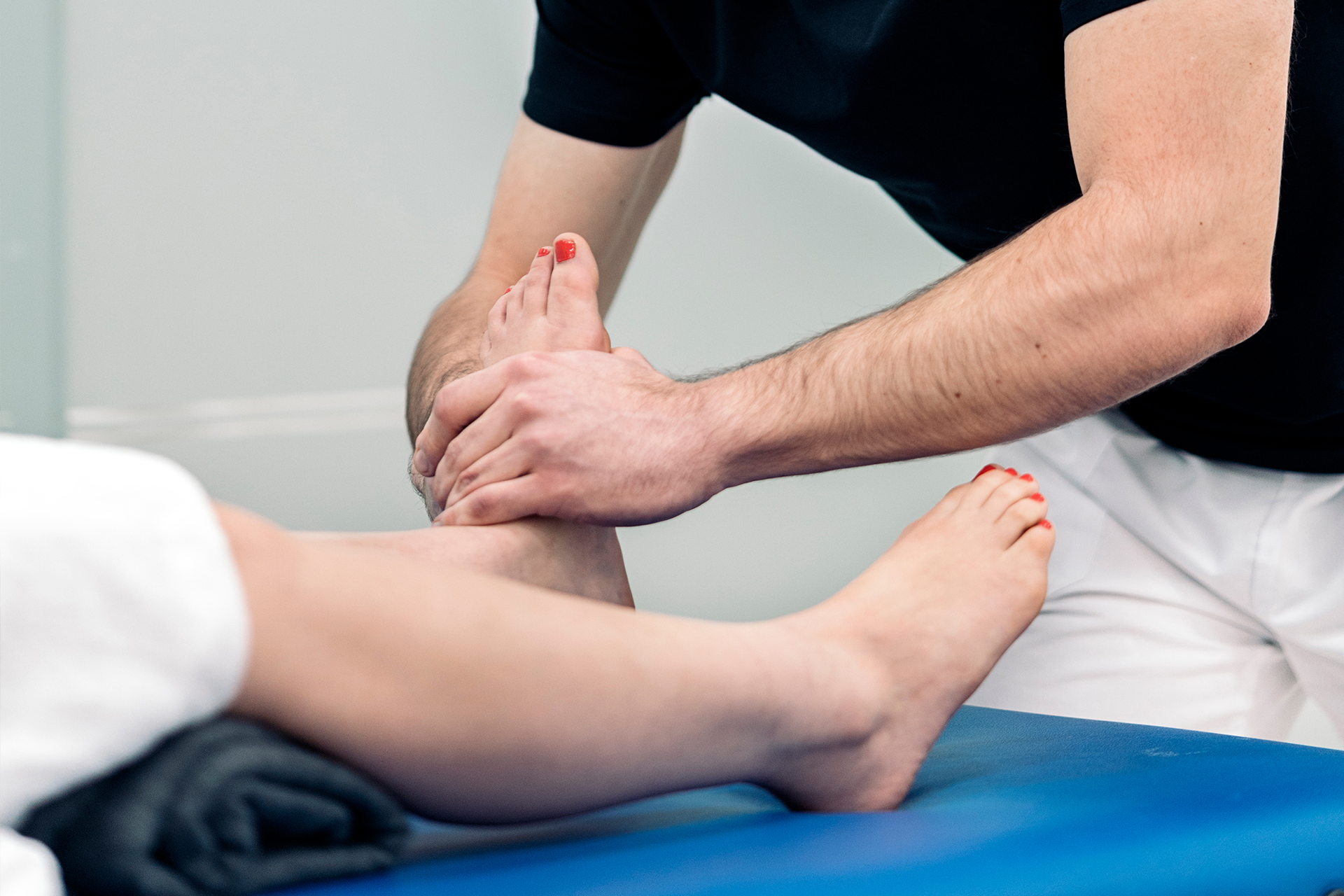
- Blisters: Caused by the friction between the skin and a combination of factors like heat, moisture, and dirt. The repetitive running motion, significantly if a slight shoe or sock doesn’t fit, may exacerbate this friction. Pro tip: Using moisture-wicking socks and applying anti-chafing creams can help reduce the likelihood of blister formation.
- Black Toenails: Often a result of the toe consistently hitting the front or top of the shoe, leading to blood accumulating under the nail. Proper shoe sizing, especially considering the natural swelling of feet during a run, is crucial.
- Plantar Fasciitis: This is the inflammation of the plantar fascia, a band of tissue running beneath the sole. Often manifesting as a sharp heel pain, it’s usually most painful during the first steps in the morning. Overpronation, high arches, or even prolonged standing can be predisposing factors. Stretching exercises, custom orthoses or night splints can be integral to support your arch.
- Metatarsalgia: Often described as a burning or aching pain in the ball of the foot, it’s common in marathoners due to the repetitive impact on this area. Try metatarsal pads or shoe inserts, and wear shoes with a wide toe box and good arch support.
- Stress Fractures: These tiny cracks in the bone, often found in the feet and lower legs of marathoners, result from repetitive force and overuse. Incorporating rest days and listening to your body’s signals can aid in prevention.
- Arch Pain: This is often tied to plantar fasciitis but can also arise from simple muscle fatigue, especially in flat-foot runners. Prescribed exercises and foot stretches, supportive footwear, and orthotic devices may help reduce pain.
- Tendonitis: The foot houses numerous tendons, and any of them can become inflamed from overuse, resulting in tendonitis. Symptoms include swelling, pain, and difficulty in moving the affected area. Physical therapy, orthoses and shockwave therapy may help manage the tendinopathies.
- Bunions: A bony bump that forms on the joint at the base of the big toe; narrow, tight shoes or biomechanical factors can exacerbate this. Wider shoes can help reduce pressure; toe spacers or bunion pads are your first remedies.
- Morton’s Neuroma: This involves the thickening of the tissue around one of the nerves leading to the toes. It can cause a sharp, burning pain in the ball of the foot, often felt between the third and fourth toes. Tight shoes or shoes with a tapered toe box can exacerbate the issue.
- Turf Toe: It’s a sprain of the big toe joint resulting from excessive upward bending. It can happen if a runner pushes off repeatedly from a particular surface or wears shoes that don’t provide sufficient support.
- Ankle Impingement: Runners may feel pain at the front or back of the ankle due to the compression of tissues during ankle movements, often a result of repeated forceful dorsiflexion (lifting the foot upwards). Look to strengthen and improve ankle mobility with prescribed exercises.
- Posterior Tibial Tendon Dysfunction (PTTD): The posterior tibial tendon helps hold the foot’s arch. Overuse can cause inflammation or even tear this tendon, leading to pain and, in severe cases, flatfoot. A little ice and rest, orthoses, and range of motion exercises or braces can help support the foot.
- Peroneal Tendonitis: Involves inflammation of the peroneal tendons, which run on the outside of the ankle. This can be due to running on sloped roads or repeated ankle rolls. From a bit of acoustic Shockwave Therapy to custom orthoses, it can help rehabilitate an existing injury.
- Sesamoiditis: This refers to the inflammation of the sesamoids, two pea-sized bones located in the ball of the foot beneath the big toe. Over time, repetitive impacts can inflame the tendons around these bones, leading to pain and inflammation. First, get some rest and avoid putting pressure on the foot. And remember, when at home or out and about, to wear soft-soled, cushioned shoes, or use insoles. Taping or strapping of the big toe can also reduce the painful condition.
- Jones Fracture: A fracture on the fifth metatarsal of the foot (the bone that connects to the pinky toe). It can result from overuse or a misstep on uneven ground. A cast or boot may be used for immobilisation, avoiding weight-bearing activities. Surgery could be required, followed by rehabilitation through physical therapy.
- Synovitis: Inflammation of the synovial tissues which line joints. In runners, this can often occur in the ankles or big toe joints. Use the ‘PEACE & LOVE’ method, consider NSAIDs to manage the pain, along with a bit of physical therapy rehabilitation. Persistent cases require surgery.
- Cuboid Syndrome: This condition involves the partial dislocation of the cuboid bone, one of the small bones on the outer side of the foot. It can be caused by an injury or the repetitive strain of pushing off the ball of the foot. Seek manual manipulation and foot mobilisation by a professional to realign the cuboid and use orthotic devices for further support.
- Os Trigonum Syndrome: A small extra bone (OS Trigonum) that some people have behind the ankle can get compressed, leading to pain, especially during push-off. Prioritise rest and steer clear of triggering activities. Opt for NSAIDs or pain relievers, use an ankle brace and consider physical therapy. Persistent cases might require surgical removal of the OS Trigonum.
It’s essential to always consult with a podiatrist or health professional when facing these or other common running foot pain, as self-diagnosis and treatment may inflict more pain.
Importance of Selecting the Right Footwear for You
For elite and new runners with foot pain, the journey of thousands of steps begins with a single, crucial decision: selecting the proper footwear. It’s not just about comfort or style but a vital step in injury prevention and optimal performance.
In running, where every step can be a testament to endurance and willpower, footwear choice is paramount to reducing the risk of injuries. The shoes runners select can either aid their journey or become a hindrance, influencing the onset and management of various foot conditions.
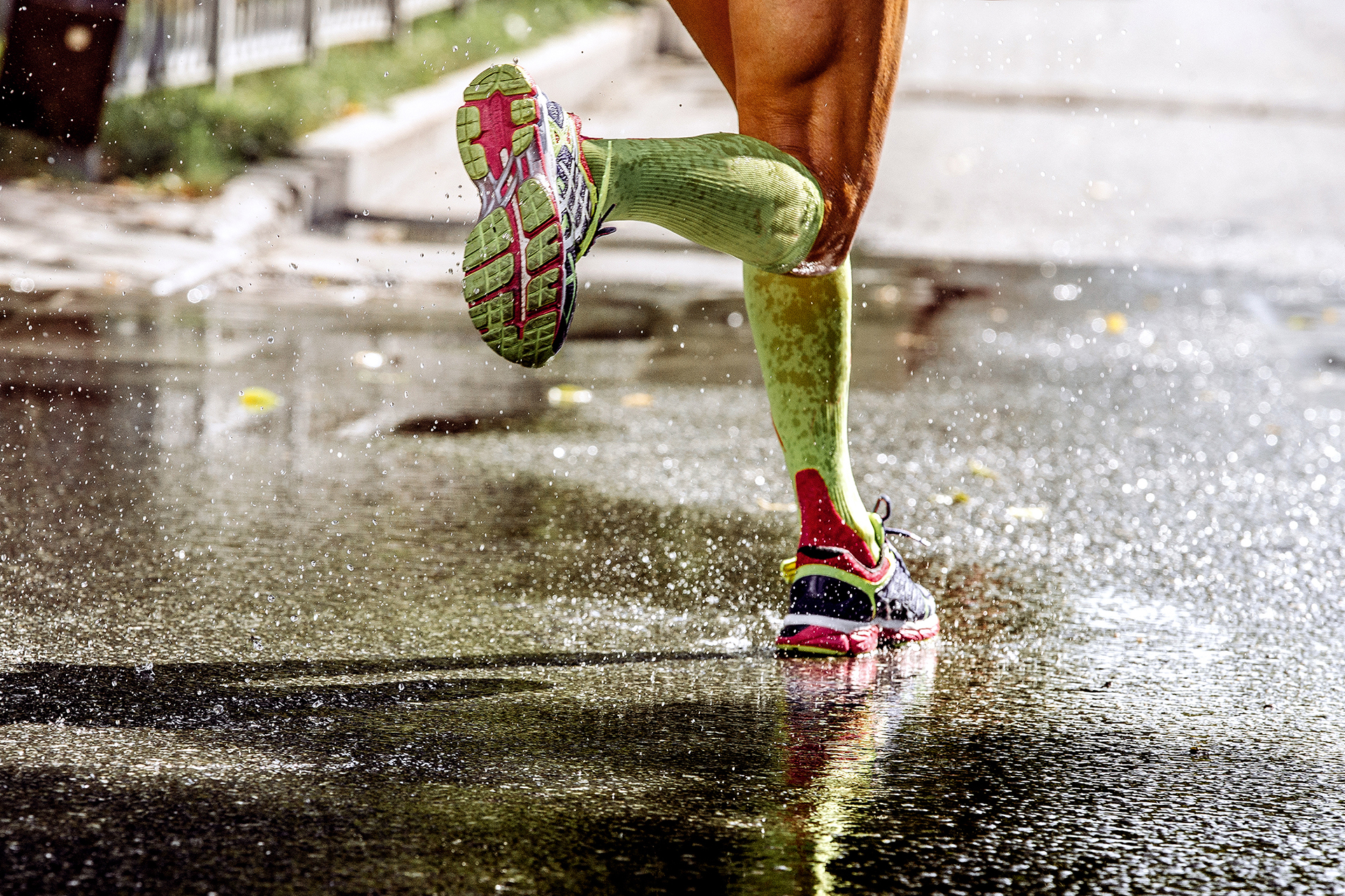
Footwear acts as the primary barrier between the repetitive force of each stride and the intricate structure of the foot. Properly selected and well-fitted shoes can distribute this force evenly, minimising focal pressure points and the risk of overuse injuries.
For instance, a well-fitted shoe can prevent the onset of blisters, typically caused by the continuous friction between the skin and the shoe’s interior. Similarly, the dreaded black toenail, often resulting from the toe’s repeated impact against the shoe, can be avoided by choosing shoes that account for the natural swelling of feet during prolonged runs.
Beyond fit, the design and structure of the shoe are also crucial. Plantar fasciitis, a common ailment among marathoners, can be influenced by footwear. Runners with specific foot structures, like high arches or tendencies to overpronate, can benefit immensely from shoes that offer targeted arch support, mitigating the strain on the plantar fascia.
However, the responsibility of a runner continues after the initial shoe selection. Monitoring the wear and tear of their footwear is equally essential. Over time, even the best shoes lose their ability to cushion and support effectively. Recognizing when a shoe has surpassed its prime and needs replacement is vital in protecting the feet from injury.
As always, seeking advice from professionals, like podiatrists, can offer personalised guidance tailored to an individual’s unique foot structure and needs.
Why Seeing a Podiatrist for Routine Foot Health Matters
A podiatrist, with their in-depth knowledge of foot anatomy and biomechanics, can assess an individual’s foot structure, gait and specific needs personalised to your biomechanics. At The Foot Practice, our team considers the arch type, pronation patterns, and potential pressure points. Based on this comprehensive evaluation, our podiatrist can recommend footwear that offers optimal support, cushioning, and fit, ensuring comfort and injury prevention for the wearer.
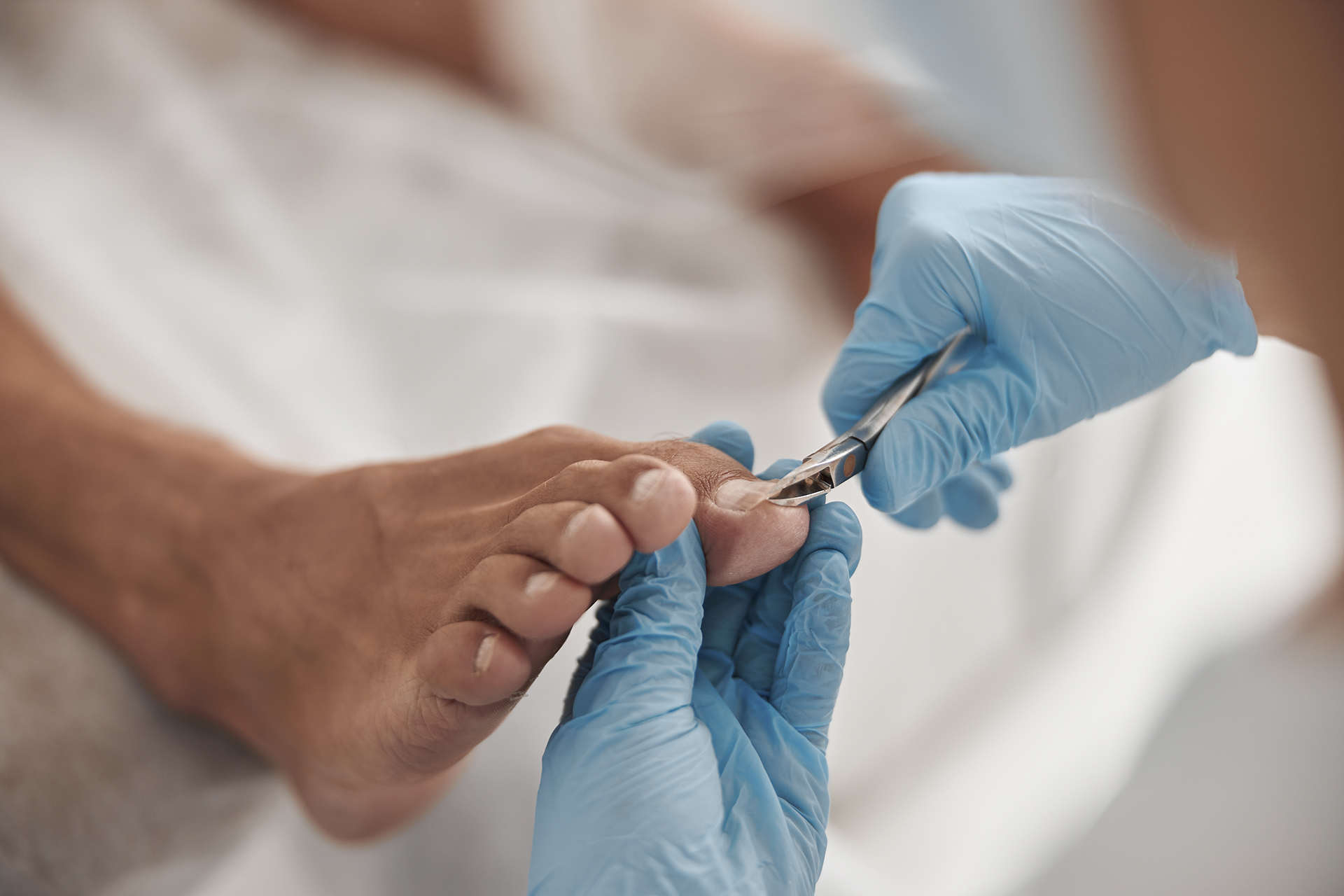
A podiatrist plays a focal role in holistic foot health, starting with the fundamentals like proper toenail care and strategies to prevent foot pain while running. Just as the alignment of teeth is crucial, the positioning of our toes can benefit from taping techniques, providing added support and preventing injury.
Just as regular dental check-ups are integral for oral health, routine foot health assessments for marathon runners with a podiatrist ensure that minor issues don’t evolve into significant problems, maintaining optimal foot health throughout your running or marathon training.

